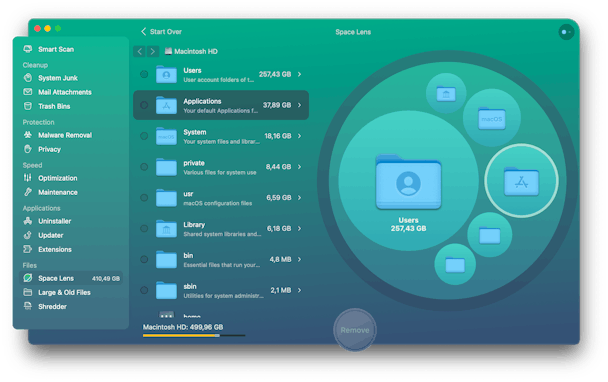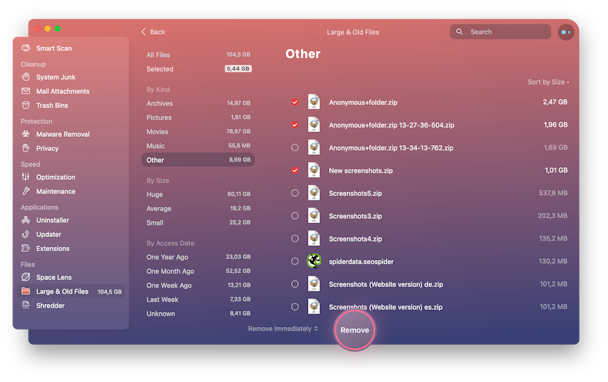How To Find A Missing Folder On Mac
There are few things in life more abrasive than not being able to find what y'all're looking for, whether information technology'due south auto keys, sunglasses, or that important file you've created on your Mac half-dozen months ago which is now hopelessly buried under gigabytes of information you've worked with since.
While the sometime can be solved with Bluetooth tags, there are no accessible trackers that aid you recover lost files Macs are and then good at hiding (business organisation idea?). But don't worry, there are more than a few ways to aid your Mac notice folders and files that y'all accounted gone forever.
Best ways to discover your lost folder on Mac
There's a special kind of feeling when your Mac is still new. You know where everything is and can pinpoint any file within a few clicks. But several months later on the pristine mural is gone and yous're left with heaps of data that's hard to go through — yous just know that y'all've put the latest version of a disquisitional presentation in the Documents folder and exit information technology at that.
Let'southward first a piddling revolution and discover out how to browse your Mac lost Documents folder with the assist of a few built-in tools manually as well as a quick automatic app.
How to detect lost apps
Oftentimes, we install apps and and so completely forget about them, which eventually leads to an overflowing hard drive, full of junk we never use. Or yous might remember there was a specific app that helped y'all convert media or crop images, and now you want to find it.
Hither's how to go about information technology.
Beginning, check whether the app you lot're looking for is in your Launchpad, which is a visual (iOS-like) layout of almost all the apps on your Mac. To access Launchpad, just pinch the Trackpad with 4 fingers. Go through the screens manually or search for the app's name in the bar at the top.

If you tin't find what yous're looking for in Launchpad, try the Applications folder itself. The shortcut to get in that location is Shift + ⌘ + A or y'all can also select Go ➙ Applications from the carte du jour bar. Gyre through all the items in the folder and make certain to bank check the Utilities subfolder also, since lots of lightweight apps get shuffled in at that place.
Unfortunately, non all apps ever end up in the Applications binder. In fact, you tin put the application file anywhere on your Mac. So if y'all think it might be applicable to your situation, yous can still rails your app in Organization Information.
System Information is a technical utility that can show y'all any static specification on your Mac, down to the smallest particular. To launch information technology, go to Launchpad and search for Organization Information, or find information technology in Applications ➙ Utilities. After opening Organisation Data, navigate downward to the Software tab and click on Applications. Observe the app yous need and copy its location. Paste the location in Get ➙ Go to Folder and hit Enter to finally observe your app.
How to detect lost files on Mac (folders too)
Now that you know where all your apps are, let's move on to how to brand your Mac detect folders and files.
It's a good thought to start any search with Spotlight, your Mac'due south built-in search engine. To activate Spotlight, click on the magnifying glass icon in the menu bar or utilize the shortcut ⌘ + Infinite. Type in the name of the lost folder on Mac and Spotlight will present yous with a few options that lucifer your query. But press Enter to open up.

Note: There are lots of ways you can brand your Spotlight search more than specific. For example, type kind:folder to only run into folders or include the minus (-) sign right before the keyword (with no infinite) to exclude a give-and-take from search.
A more authentic way to recover lost files Macs hide somewhere in their system is to apply Finder. Open Finder (the showtime icon in your Dock) and type the query in its search field. Make certain to select Search: This Mac to go the results from everywhere. The good role about using Finder is how you lot can click the plus sign just below your search query and start specifying your search on a variety of dimensions, such as File Size, File extension, and any other metadata category — fifty-fifty a combination of a few.

Both of the ways to a higher place work well for when you lot desire to detect lost files on Mac manually and at least sort of know what you're looking for. But what's the all-time manner to spot files and folders that are not oft used but however accept upward lots of space?
How to quickly delete large files and folders
When you demand to free upwards space, picking files ane by i is very inefficient (east.thou. deleting one movie or a film folder). Besides, the heaviest folders on your Mac are not probable to exist on peak of your listen.
What y'all need here is an automatic solution similar CleanMyMac Ten. This Mac optimization utility not just scans your Mac in total to find all possible inefficiencies every bit well equally malware simply visually shows you lot which files and folders take up all the space.
Get-go, apply CleanMyMac 10 to run a Infinite Lens scan:
- Download CleanMyMac X for gratis.
- Navigate the sidebar and select Space Lens under the Files tab.
- Hit Scan.
- Travel through your folders and files to come across if any stand out.
- But check the folders you want to get rid of and click Remove when you're done.

Then, move on to the Large & Old Files browse:
- Select Big & Old Files in the sidebar.
- Hitting Scan.
- From the filtering options, choose the time you've opened the files last (e.g. One Month Agone) or size, or file type.
- Cheque all the files you don't demand anymore and click Remove.

Just like that, you can notice lost files on Mac also as get rid of the ones you don't need anymore, using CleanMyMac Ten. In my case, a few seconds of piece of work led to over 7 GB of actress free space, and I've never felt more in control of my Mac than now.
Source: https://macpaw.com/how-to/find-lost-files-mac
Posted by: frazierliblow.blogspot.com


0 Response to "How To Find A Missing Folder On Mac"
Post a Comment